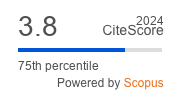Article | Open Access
Non-Formal Cultural Infrastructure in Peripheral Regions: Responsibility, Resources, and Regional Disparities
| Views: | 2124 | | | Downloads: | 1343 |
Abstract: Non-formal cultural education (NCE) infrastructure has recently been at the centre of discussion regarding the promotion of equal opportunities as well as social cohesion and resilience. The German government strives to ensure equivalent living conditions, including access to education throughout the country. Although NCE infrastructure is considered a service of general interest, it is a voluntary service that districts are not obliged to provide. Research shows that NCE infrastructure provision and funding vary significantly between regions and that qualitative case analyses are needed to adequately contextualise key factors for the provision of NCE infrastructure. These developments and findings raise many questions against the background of spatially differentiated socio-economic landscapes. The article analyses two peripheral regions in Germany by examining key factors for the local provision of NCE infrastructure based on content analysis of qualitative interviews. This article aims to understand how NCE infrastructure is provided in peripheral regions to discuss the effect of these dynamics on the development of equivalent living conditions in Germany. The results show that citizens in peripheral areas have found alternative ways of providing NCE infrastructure due to the lack of financial resources available from the public sector. Self-responsibilisation, civic engagement, and individual commitment provide and sustain large parts of NCE infrastructure in rural areas. These developments impede the provision of equivalent living conditions in Germany while enabling a more resilient community through civic engagement. This article, therefore, provides an important contribution to the discourse on social and regional inequality.
Keywords: cultural education; cultural governance; Germany; living conditions; non-formal cultural infrastructure; periphery; social infrastructure
Published:
© Lea Fobel. This is an open access article distributed under the terms of the Creative Commons Attribution 4.0 license (http://creativecommons.org/licenses/by/4.0), which permits any use, distribution, and reproduction of the work without further permission provided the original author(s) and source are credited.


